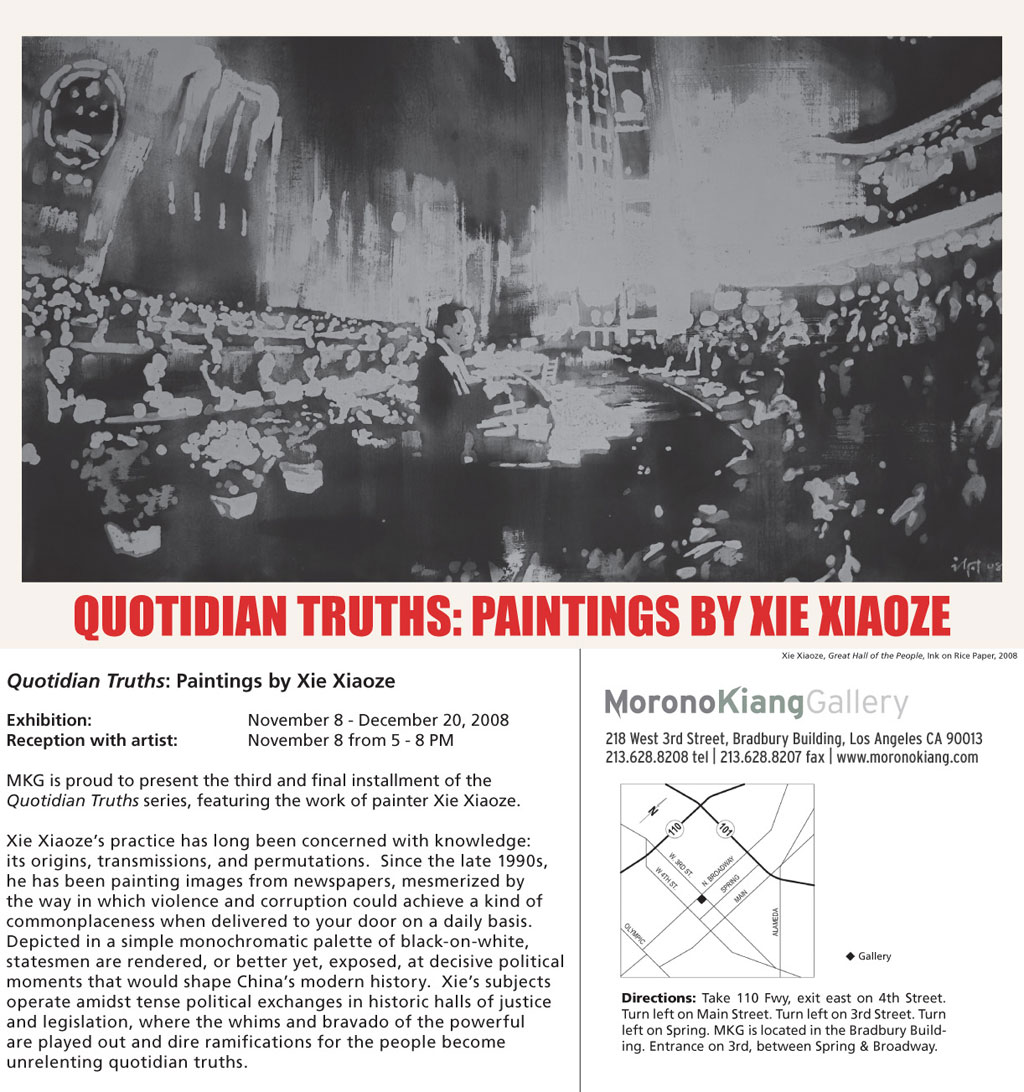 THE TRAIL OF DEATH FOR THOSE WEARING HIGH HEELS
THE TRAIL OF DEATH FOR THOSE WEARING HIGH HEELSIt's been a month and a half since our good friend, Jane Hyun, took the matrimonial leap. The groom (Ethan Emmet Bodle) seemed to be one of sufficient faculties and his family was a reassuring mixture of characters, categoricals and the usual wedding suspects. The ceremony was short and sweet, complete with unexpected pauses and touching vows. The typical ceremonial protocols were followed with the requisite coterie of relatives and friends in attendance and the reception was wonderfully satisfying. Unfortunately, I could not gain audience with the feted couple so I was not able to suss out courtship details or gain enough information on the newly crowned husband to make any snap judgements. I did find the event significant in its organization and as to how it was orchestrated including the specific elements that were chosen to authenticate and give meaning to the ceremony.
 GUESTS COMPLETING THE TEST TREK OF FRIENDSHIP
GUESTS COMPLETING THE TEST TREK OF FRIENDSHIPThe ceremony was short and sweet with slight variations of traditional ceremonies. Since it was outdoors, the chamber trio had to compete with nature's ambient symphony of breezes rustling the leaves and birds chirping. The small clearing that was the setting was sort of a natural amphitheater with sycamores standing in for an altar. This setting gave the event an intimate feel, allowing the guests to become a party to the contract between the happy couple.
 THE MOTHER OF THE BRIDE
THE MOTHER OF THE BRIDEI consider myself fortunate to be a friend of the bride's family. I hope that gives me license to reveal that the bride's parents are originally from Korea, from exceptional lineages that can be traced back countless generations. The mother and father have made a commitment of their own in creating a place for their family here in the U.S. They may seem to be conservative scholars, but they are in fact rebellious pioneers in the eyes of their ancestors. Jane reflects that manifest spirit in this wedding ceremony. This does little to mitigate her parent's desire for her to assume an image of domestic normalcy with familial intentions included.
 ESCORTING THE BRIDE UP THE PATH
ESCORTING THE BRIDE UP THE PATHThe reception after the ceremony followed the usual blueprint. Drinks with a light nosh before the musical chairs with name cards at round tables with many place settings and too few heating thingies to ward off the coastal temperature drop as the sun coolly set over the horizon (whew!). This apparent nod to tradition was tempered by the beautifully decorated patio... origami cranes by the oodles and home grown succulents acting as centerpieces. The wedding cake did not define the mores and standards of the newly married as their was no cake. An orgy of handcrafted cupcakes arranged in concentric tiers showed the creativity and free spirits of the planners. The ceremonial first slice became the ceremonial unwrapping without the gratuitous face smearing.
 MEASURING THE DISTANCE TO THE EXIT?
MEASURING THE DISTANCE TO THE EXIT?The whole affair was sweet and romantic. I found the break from tradition a relief from the usual procession of rituals. Most notably, I remember large portions of the day. I usually forget details quickly and I am happy if I can at least remember having been somewhere at sometime. What made the event memorable for me was not the elemental requisite pieces but the details that filled those moments. The cast of characters (which included us, the audience) was a tapestry that filled the spaces in between and provided a stage for the whole procession. I was both inside and outside of the moments making up this day. Very few of these types of affairs affect me in any deep manner, but I found this day to be one of the nicest. It was entertaining and more importantly, personally reassuring. Not in the "its nice to see a young couple get hitched" or "they look so good together" kind of way. I found it reassuring in that it reaffirmed my own personal commitment those many years ago. It reinforced my belief that a personally crafted ceremony is vastly more significant than any cookie-cutter or insane super spectacular side show wedding. It also brings to mind that in creating a unique event involves its own level of commitment. Breaking with tradition while creating a personal expression played out in front of a crowd of a hundred guests is an acid test that will only be the first in a succession of similar trials as a dedicated couple. I wish Jane and Ethan all the best and I thank them for extending a personal invitation for my wife and I to share in their moment.




























